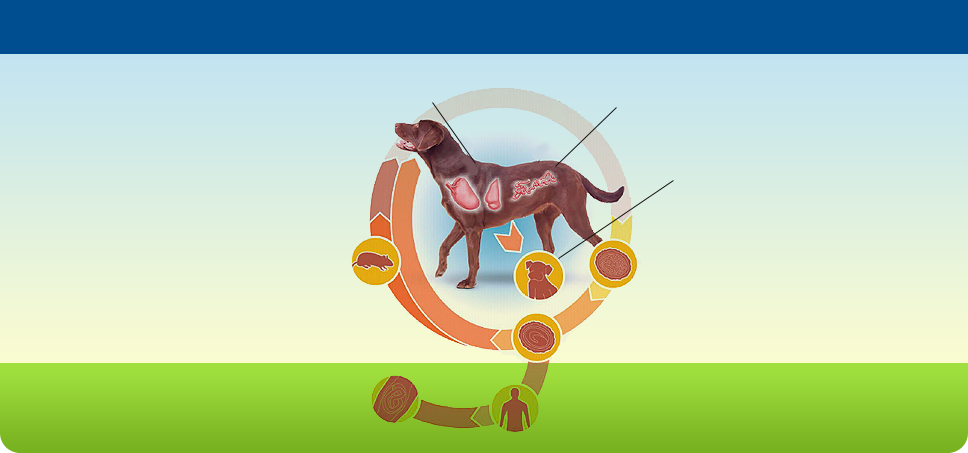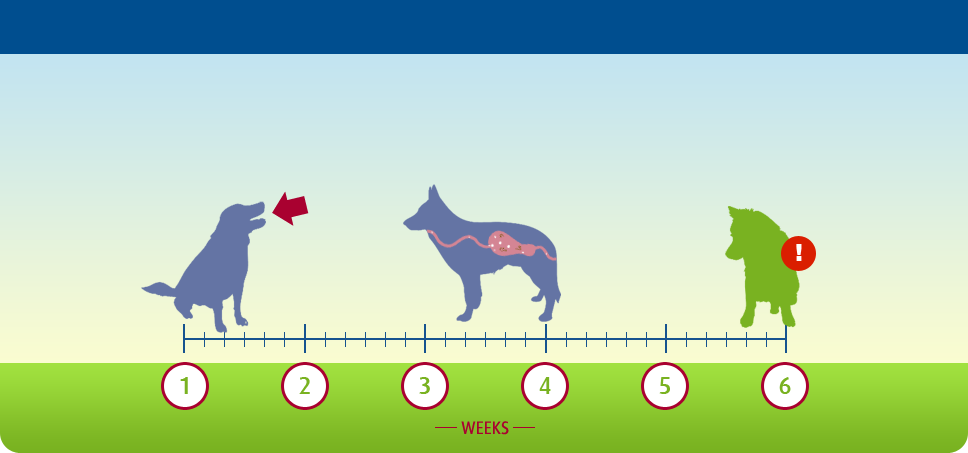
Please rotate your mobile for a better view
Wormopedia - Roundworms



Roundworm (Toxocara canis, Toxascaris leonina, Toxocara cati)
Roundworm (Toxocara canis, Toxascaris leonina, Toxocara cati) are found in the faeces of infected dogs and cats. The eggs can be found in soil anywhere, from parks and playgrounds to gardens.
- AT RISK -

Roundworm (Toxocara canis, Toxascaris leonina, Toxocara cati)
THIS WILL MAKE YOU WASH YOUR HANDS ONCE YOU’VE BEEN TO THE PARK!
Studies have found that 75% of sandpits* are contaminated with roundworms and their eggs.
Urgh!
*Abe & Yasukawa 1997

Roundworm (Toxocara canis, Toxascaris leonina, Toxocara cati)
Symptoms
It is not always apparent if your pet has picked up roundworm because although their digestive system can become blocked and inflamed they won’t necessarily display any obvious symptoms.
Puppies and kittens however can start to lose weight, develop a ‘pot bellied’ look and may even develop pneumonia.
Puppies and kittens however can start to lose weight, develop a ‘pot bellied’ look and may even develop pneumonia.

Roundworm (Toxocara canis, Toxascaris leonina, Toxocara cati)
Lifecycle...
Larvae migrate via liver and lung via to intestine and mature into adults
Adult worms lay eggs in small intestine
Tissues of transport host or embryonated eggs ingested by dog
Transmission to offspring: Transplacental or transmammary
Non embryonated eggs in faeces
Eggs embryonate
Larvae undergo 2 molts to infective third stage larvae within egg
Humans can be infected by ingesting embryonated eggs
Embryonated eggs ingested by transport host
Embryonated eggs survive for long periods in contaminated environments
Larvae migrate in internal organs (ie. muscles, eyes and central nervous system)

Roundworm (Toxocara canis, Toxascaris leonina, Toxocara cati)
Infection stages
The incubation period for roundworm is about 4-6 weeks, meaning it can be over a month between ingesting the roundworm, and them passing eggs in their faeces which may infect other animals.

Roundworm (Toxocara canis, Toxascaris leonina, Toxocara cati)
Risk to humans
We humans are not immune to the roundworm either – the eggs can be found in soil (anywhere, from parks and playgrounds to gardens) so if we’re not careful we can unwittingly ingest them from dirty hands or a dropped, but hastily retrieved, biscuit.
Unfortunately, children (who are most likely to pick up an infection because they are always grabbing, touching and sticking their hands in their mouths) are particularly vulnerable.
The problems come as the roundworm larvae pass into internal organs, affecting the muscles, eyes and central nervous system. A fever may develop and there can be internal damage to the lungs, liver and eyes.
Unfortunately, children (who are most likely to pick up an infection because they are always grabbing, touching and sticking their hands in their mouths) are particularly vulnerable.
The problems come as the roundworm larvae pass into internal organs, affecting the muscles, eyes and central nervous system. A fever may develop and there can be internal damage to the lungs, liver and eyes.

Roundworm (Toxocara canis, Toxascaris leonina, Toxocara cati)
Spread in Europe
Roundworm can be found right across Europe.

Roundworm (Toxocara canis, Toxascaris leonina, Toxocara cati)
How to get rid of them
Fortunately pets can be treated. Ask your vet for a ‘vet strength’ wormer – a palatable treat that can protect against disease from roundworms in both cats and dogs.





this...